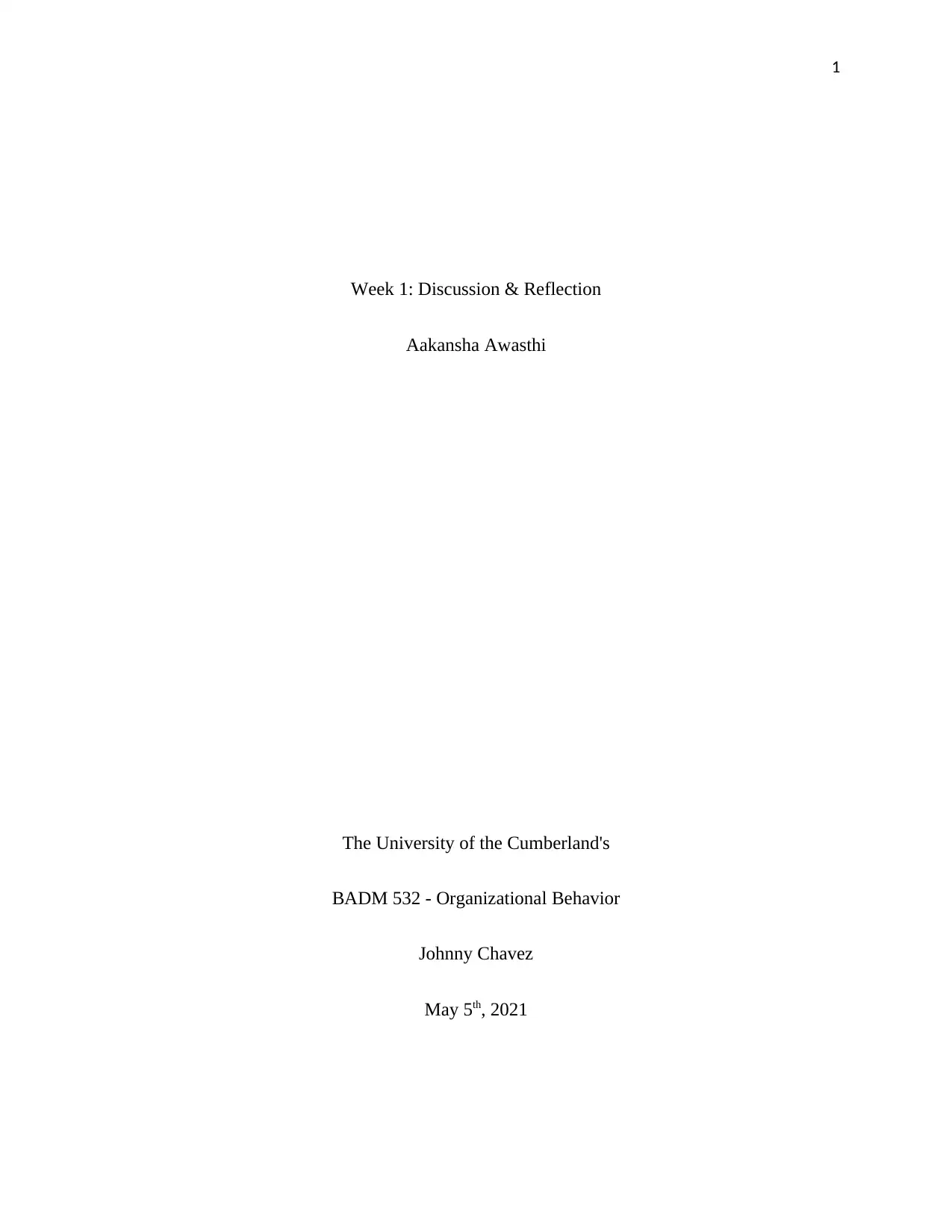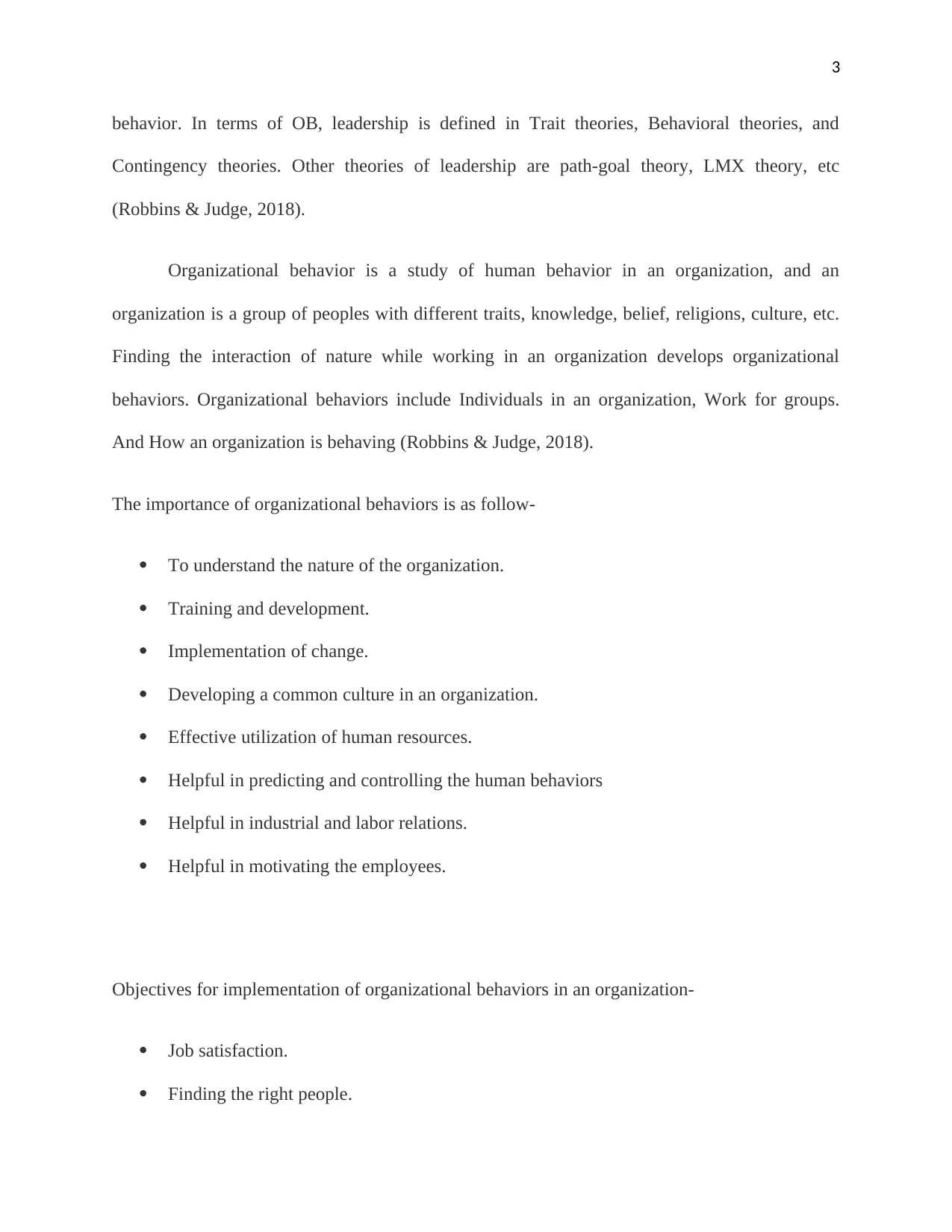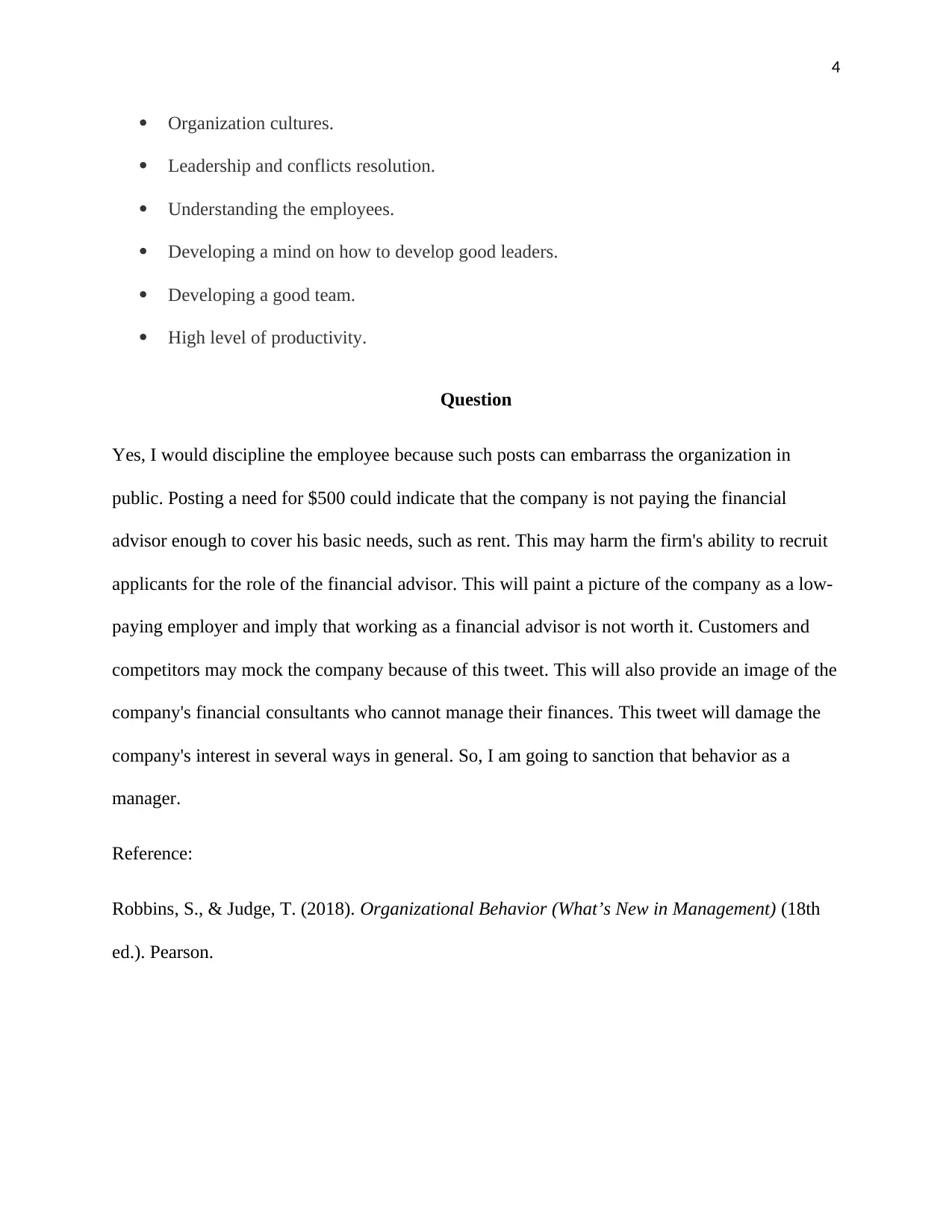Week 1 Discussion and Reflection: Organizational Behavior, BADM 532
VerifiedAdded on 2021/06/07
|4
|761
|128
Discussion Board Post
AI Summary
This discussion post, written for BADM 532 at the University of the Cumberlands, reflects on the core principles of organizational behavior. It defines organizational behavior as the study of how individuals, groups, and structures impact behavior within organizations. The post explores the importance of understanding organizational behavior for effective management, including topics like leadership, group dynamics, and employee motivation. The author discusses various leadership theories and OB models, emphasizing the interplay of inputs, processes, and outputs at individual and group levels. Additionally, the post addresses a scenario involving employee discipline, justifying a manager's decision to discipline an employee for a potentially damaging social media post. The post references Robbins & Judge's "Organizational Behavior" to support its arguments.
1 out of 4











![[object Object]](/_next/static/media/star-bottom.7253800d.svg)